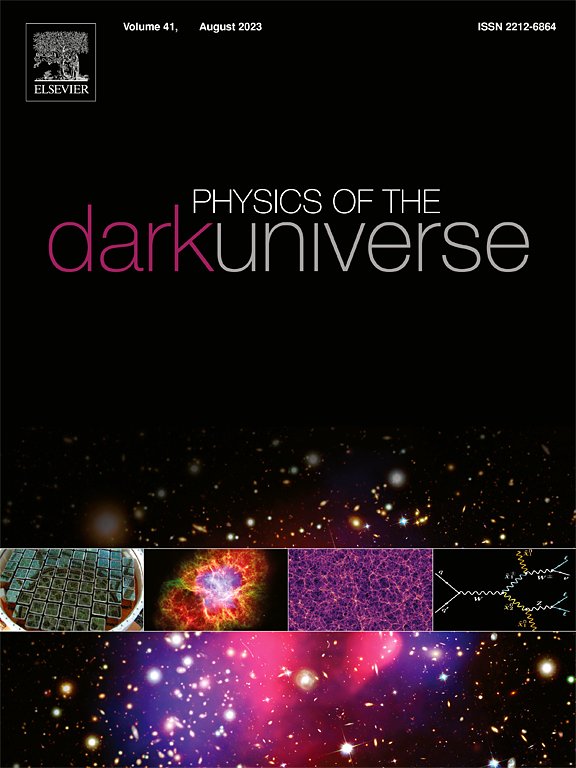A search for sterile neutrinos in interacting dark energy models using DESI baryon acoustic oscillations and DES supernovae data
IF 6.4
2区 物理与天体物理
Q1 ASTRONOMY & ASTROPHYSICS
引用次数: 0
Abstract
Sterile neutrinos can influence the evolution of the universe, and thus cosmological observations can be used to search for sterile neutrinos. In this study, we utilized the latest baryon acoustic oscillations data from DESI, combined with the cosmic microwave background data from Planck and the five-year supernova data from DES, to constrain the interacting dark energy (IDE) models involving both cases of massless and massive sterile neutrinos. We consider four typical forms of the interaction term , , , and , respectively. Our analysis indicates that the current data provide only a hint of the existence of massless sterile neutrinos (as dark radiation) at about the level. In contrast, no evidence supports the existence of massive sterile neutrinos. Furthermore, in IDE models, the inclusion of (massless/massive) sterile neutrinos has a negligible impact on the constraint of the coupling parameter . The IDE model of with sterile neutrinos does not favor an interaction. However, the other three IDE models with sterile neutrinos support an interaction in which dark energy decays into dark matter.
利用DESI重子声学振荡和DES超新星数据在相互作用暗能量模型中寻找惰性中微子
惰性中微子可以影响宇宙的演化,因此宇宙学观测可以用来寻找惰性中微子。在这项研究中,我们利用来自DESI的最新重子声学振荡数据,结合来自普朗克的宇宙微波背景数据和来自DES的五年超新星数据,来约束涉及无质量和大质量无菌中微子的相互作用暗能量(IDE)模型。我们分别考虑了相互作用项Q=β ρde、Q=β ρc、Q=β ρde和Q=β ρc的四种典型形式。我们的分析表明,目前的数据只提供了在大约1σ水平上存在无质量无菌中微子(作为暗辐射)的暗示。相反,没有证据支持大质量惰性中微子的存在。此外,在IDE模型中,(无质量/有质量)无菌中微子的包含对耦合参数β约束的影响可以忽略不计。惰性中微子Q=β ρc的IDE模型不支持相互作用。然而,其他三个使用无菌中微子的IDE模型支持暗能量衰变成暗物质的相互作用。
本文章由计算机程序翻译,如有差异,请以英文原文为准。
求助全文
约1分钟内获得全文
求助全文
来源期刊

Physics of the Dark Universe
ASTRONOMY & ASTROPHYSICS-
CiteScore
9.60
自引率
7.30%
发文量
118
审稿时长
61 days
期刊介绍:
Physics of the Dark Universe is an innovative online-only journal that offers rapid publication of peer-reviewed, original research articles considered of high scientific impact.
The journal is focused on the understanding of Dark Matter, Dark Energy, Early Universe, gravitational waves and neutrinos, covering all theoretical, experimental and phenomenological aspects.
 求助内容:
求助内容: 应助结果提醒方式:
应助结果提醒方式:


